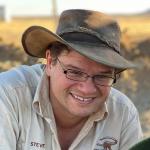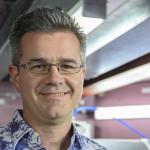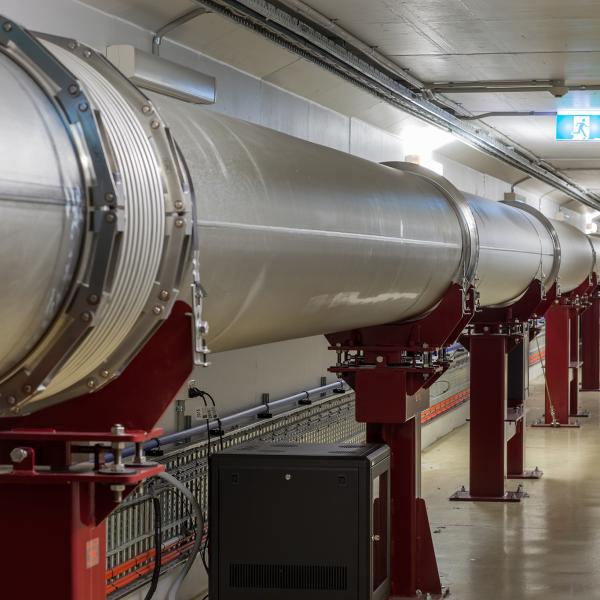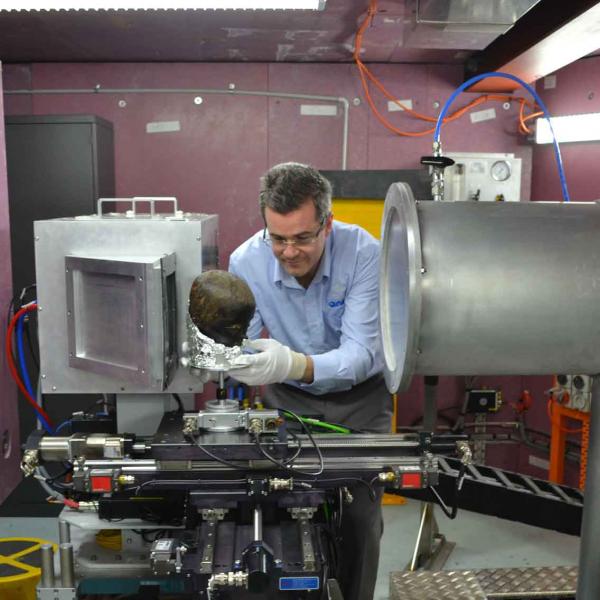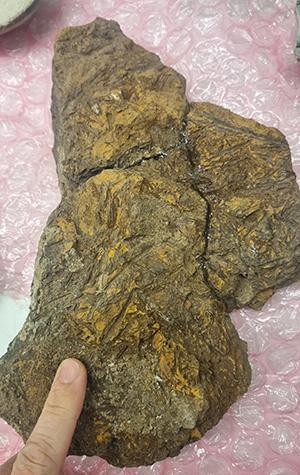
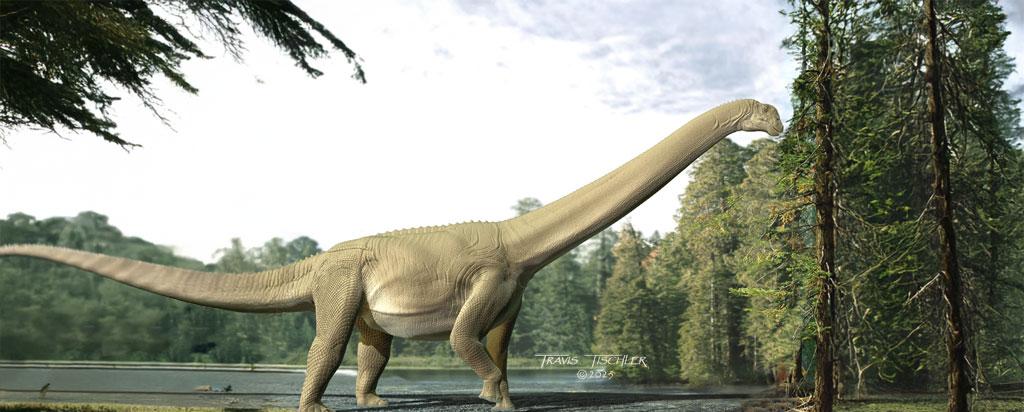
Published on the 13th June 2025 by ANSTO Staff
Key Points
-
Research led by Curtin University has confirmed that at least some sauropods were plant eaters
-
The investigation is believed to be the first identification of gut contents in a sauropod
-
Advanced imaging techniques at the Australian Synchrotron and Australian Centre for Neutron Scattering provided supporting evidence of the gut content
International research led by Curtin University and supported by ANSTO, has identified and studied the first sauropod dinosaur gut contents found anywhere in the world. The stomach content was preserved with a reasonably complete skeleton of the Australian Cretaceous species Diamantinasaurus matildae found in Winton Queensland.
Imaging on the Imaging and Medical beamline at the Australian Synchrotron and the neutron tomography instrument Dingo at the Australian Centre for Neutron Scattering provided supporting evidence of the stomach contents, known as a cololite, and the first sauropod skin found in Australia, which was found associated with the cololite.
The investigative team, led by Curtin University and Australian Age of Dinosaurs Museum of Natural History, included ANSTO, University College London (UK), University of Colorado Boulder (US), University of New England (Aus), Swedish Museum of Natural History, and CSIRO.
“Our interpretation of this specimen as the preservation of a genuine cololite rests on the physical properties of the rock, studies of the burial decay and preservation processes that affect animal and plant remains as they become fossilised, micro-computed tomographic, and geochemical evidence, as well as the abundance of plants within the cololite relative to other rocks in the site,” explained Dr Jospeh Bevitt, a co-author on the paper published in Current Biology.
“Sauropod dinosaurs are iconic, unmistakable, and include among their ranks the largest terrestrial animals of all time, including Brontosaurus, Brachiosaurus, and Argentinasaurus ,” he added.
“There has been little doubt since the 1870s that they were herbivorous, or plant-eating. However, the specific plants eaten by sauropods, and the heights above ground at which they fed, have remained obscure. This is because of the lack of direct fossil evidence in the form of gut contents— until now,” said Dr Bevitt, an expert in analysing fossilised remains of dinosaurs and other prehistoric fossils.
The Diamantinasaurus cololite allowed the research team to draw several overarching conclusions. At least some sauropods were herbivorous, a confirmation that supported more than 150 years of scientific theory.
Sauropods did not engage in much processing of food in their mouths, which also supported scientific consensus.
The evidence suggested that at least some sauropods engaged in high-level browsing on conifer foliage, seed-fern flowers and fruit, and some sauropods ate angiosperms that are the flowering plants that are utterly dominant in the world today.
The research also confirmed that previous inferences of sauropod feeding height, based on anatomy, appeared to be more or less accurate.
“Our findings suggest that sauropods, at least as fast-growing subadults, were indiscriminate, bulk feeders. This strategy evidently served them well for 130-million-years and may have underpinned their success,” added Dr Bevitt.
“Because of the huge public interest in these iconic and instantly recognisable dinosaurs, we expect everyone will be excited to learn about the last meal of this Australian sauropod.”
https://doi.org/10.1016/j.cub.2025.04.053
Illustration by Travis Tischler
